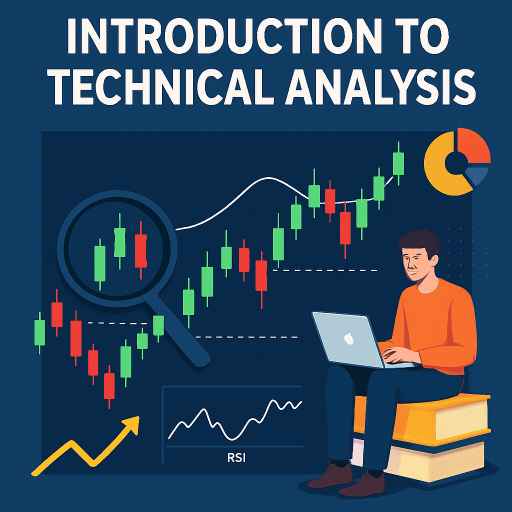
If you haven’t read our 👉introduction to forex trading hurry up and read through before continuing with us here on introduction to technical analysis. Now you have read and learnt the basic introduction to forex — what it is,and how it slightly differs from regular trading due to the difference in commodities traded — we can move a step further. In forex, instead of buying and selling physical goods like in regular trade, we deal with currencies. The aim is the same: buy low, sell high, and make a profit.
In this post, we are going to explore introduction to technical analysis, a price action tool which is one of the two major price action methods of determining when to buy or sell a currency. The other method is called fundamental analysis, but unlike most blogs that start with that, we will begin with technical analysis because it’s more hands-on and widely used by traders who want to see market patterns and price movements in action.
Where Does Forex Trading Take Place?
Before diving deep into the introduction to technical analysis, there is one important question that might be in your mind: Where do we actually participate in this forex market?
In regular trading, you go to physical locations — markets, shops, stalls, or malls. In forex, however, we deal with a global market that is decentralized. This means there’s no single physical location where the forex market is “pegged.”
The forex market can happen anywhere currency is exchanged. If you exchange dollars at a bank in Nigeria, that bank acted as a forex market at that moment. If you exchange dollars with a local currency trader in a marketplace, that place has temporarily become a forex market.
Why We Don’t Trade Forex Physically
Even though forex can technically happen anywhere, traders like us who want to make money from it don’t move from place to place looking for someone to trade with. Physical transactions are too slow and too limited for the kind of opportunities forex offers.
Instead, we use a special kind of trading environment called a broker platform. This is a digital market space where everything is fast, reliable, and connected to millions of participants around the world. This means you don’t have to worry about finding someone to buy from or sell to — the liquidity is extremely high, and transactions happen in milliseconds.
The Role of Technical Analysis in Forex
Now, let’s get into what introduction to technical analysis really means. In simple terms, technical analysis is the study of past price movements and patterns to predict future price movements. This method does not focus on the news or economic events that drive prices (that’s the job of fundamental analysis). Instead, it focuses on price charts, patterns, and indicators.
Think of it like reading the footprints left on the sand. By studying where prices have been, we can make an informed guess about where they are likely to go next.
Why Start With Technical Analysis?
Most new traders find introduction to technical analysis more engaging because it’s visual and straightforward. You can see the charts, draw lines, and spot trends with your own eyes. It’s almost like learning to read a map — once you know the key symbols and signals, you can navigate the market more confidently.
This is why starting with technical analysis can be a big advantage. You learn to understand the “language” of the market before you start blending it with other tools like news events, economic data, and political influences.
Upward habits broker recommendations
You need to experience what forex market looks like on a broker(special kind of market environment)
This are best recommend brokers for you to have a feel of what it looks like, sing up/register with your email asdress. We going to use them in the future for your actually buying and selling of currency, but for now sign up take a look around feel the environment and get back to upward habits.
- 👉FBS, click here to register and access FBS brokerage
- 👉Exness, click here to register and access Exness brokerage services
👉click here to learn more about brokers, trading platforms like meta trader 5 and how to navigate in them to be able to place buy and sell in them
Things we go learn to able to do technical analysis
When we use technical analysis, we rely on tools such as:
- 👉Candlestick charts – to visualize price movements.
- 👉Support and resistance levels – to identify where price might reverse.
- 👉Indicators like moving averages or the Relative Strength Index (RSI) – to measure momentum and trends.
These tools help us find the right time to enter (buy) and exit (sell) trades. By combining them, you can build a strategy that suits your personality and trading style.
The introduction to technical analysis is your gateway to seeing the forex market in a whole new way. It’s not about guessing; it’s about making calculated decisions based on what the market is showing you. Just as you wouldn’t drive a car without learning how to read road signs, you shouldn’t trade forex without learning how to read charts and patterns.
In the next part, we’ll explore specific technical analysis tools and how to apply them step-by-step in your forex trading journey. The more you practice, the better you’ll become at spotting opportunities and avoiding costly mistakes.